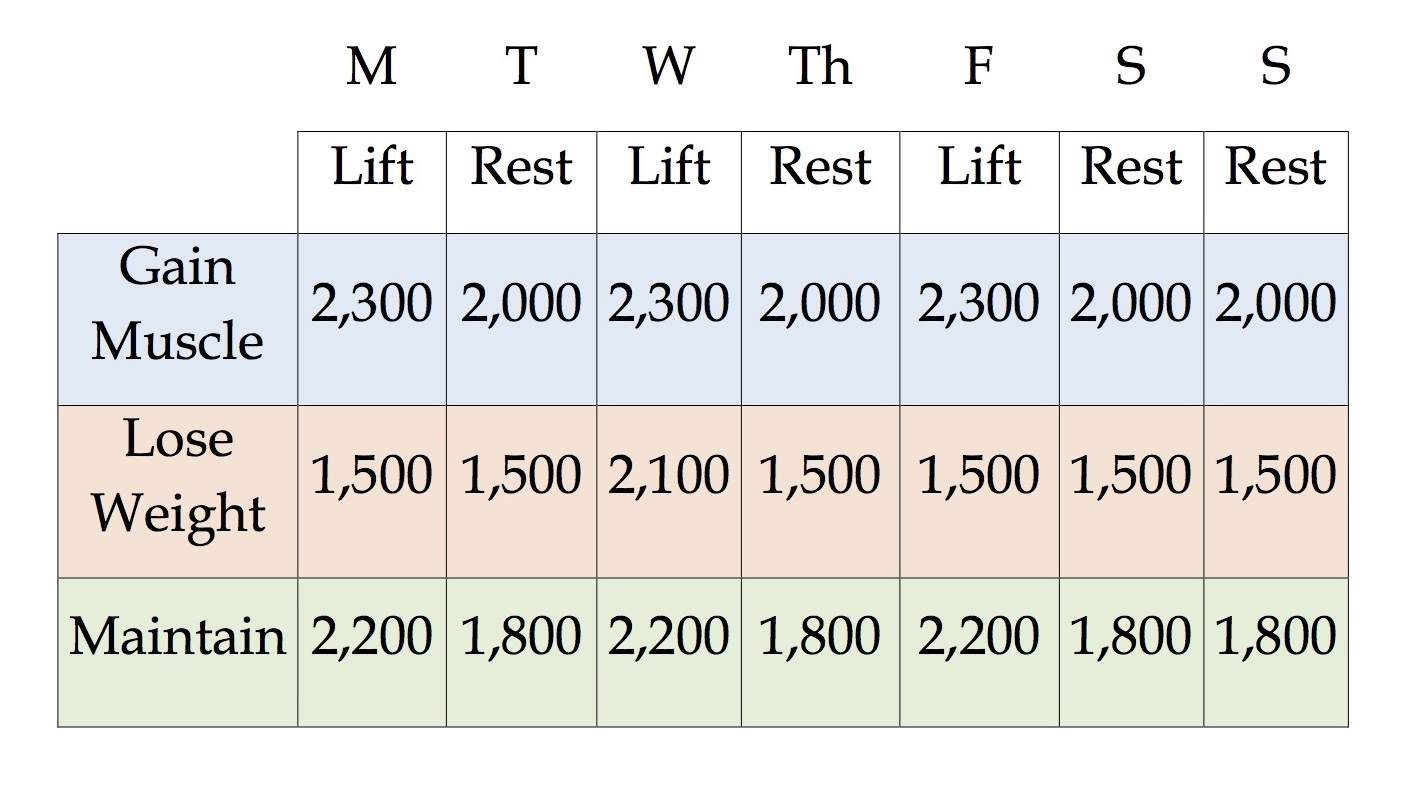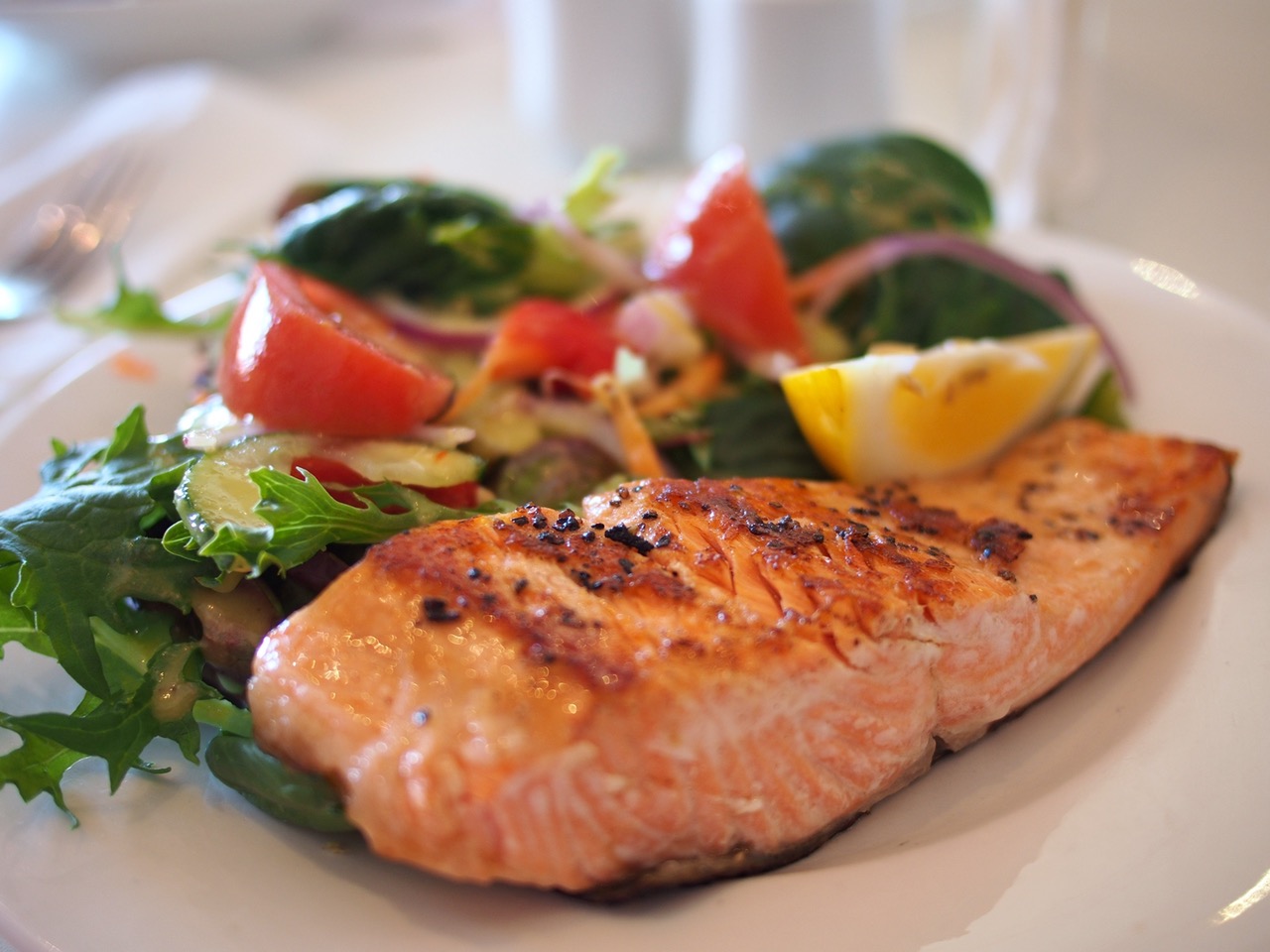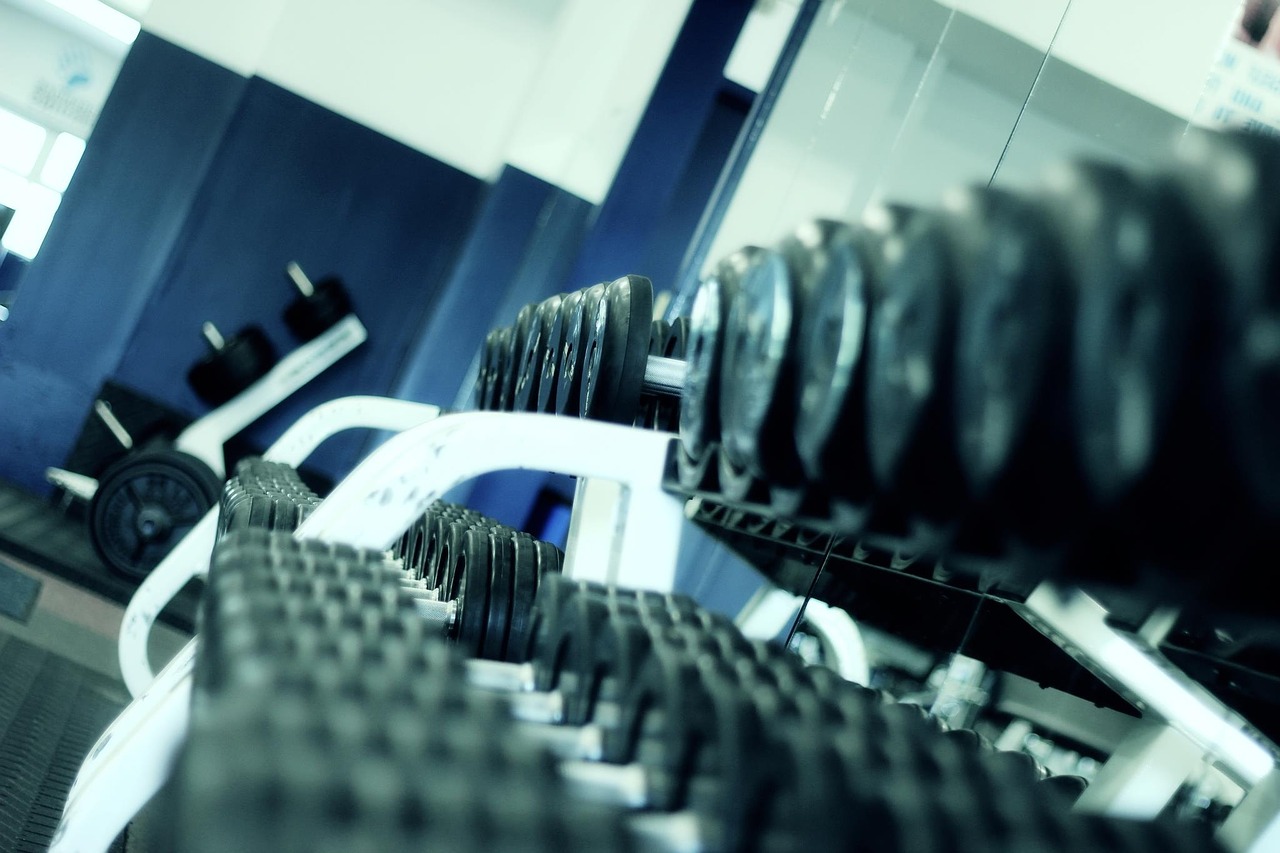The following is a guest article from Josh Meyer of Glacier Nutrition.
***
Like anything you put your mind to in life, achieving the lean body you want is absolutely possible.
Unfortunately, the Internet, the smart guy at the gym, and popular fitness magazines have been exposing you to misinformation.
Nonsense dogmas. Broscience. It all makes reaching your goals that much harder.
Your body is incredible. It’s an efficient machine that wants to be lean and muscular. And with proper nutrition and strength training, it can be just that.
Use this easy, research-based approach to improve your nutrition habits and eat your way to a lean body.
Before building out a plan, we need to go over some basics. And that means it’s time to bust a few nutrition myths.
DISCLAIMER: Links to research sources are included throughout this article. Speak with your doctor before starting any diet or fitness plan.
Myth #1: The Food Pyramid
Remember this thing? It was all over the supermarket a few years back. But have you seen it lately?
Probably not. Unless you’ve been hoarding monster-themed cereal boxes from 15 years ago.
The FDA revamped the food pyramid in 2005 and then abandoned it completely in 2011. Because it was based on junk science and half-baked research.
Do you remember what it claimed your largest food group should be? Carbohydrates. And where were fats and proteins? Up towards the top, in the tiniest sections.
But the latest research shows these should be flipped around. Larger quantities of proteins and healthy fats do a body good. There’s no need to consume massive quantities of carbs.
It’s a nutrition mistake that is a major contributing factor to why so many Americans are obese and unhealthy.
High protein and high fat diets were mislabeled as “bad” for you in the 80s. Low-fat diets were all the rage in the 90s. But what does the science say about the results of these diets?
Consider one analysis of the success rates of different diets. The research team concluded that “low-carbohydrate interventions led to significantly greater weight loss than did low-fat interventions.”
Reality: A high-protein, low-carb diet with moderate to high levels of good fats is the way to get the physique you want.
Myth #2: Eat Often for Better Metabolism
This concept is sometimes called “grazing”. The idea is that you should eat 5-6 meals throughout the day to keep your metabolism high. But the research results disagree.
Here are two examples:
- This 2001 study shows that meal frequency has “no major impact on energy intake or expenditure.”
- A 1997 review of several studies into “frequency of eating and body weight” found that “nibbling meal patterns failed to reveal significant benefits.”
I learned the hard way. I spent years inconveniencing myself (and others), trying to eat every 2 -3 hours.

No good. Free yourself from this dogma.
Reality: It really doesn’t matter how often you eat. Instead, focus on eating right.
Myth #3: Breakfast Is the Most Important Meal of the Day
Nope. Breakfast is neither the most important meal of the day, nor the key to weight loss. And there’s plenty of science to back this up.
One study looked at the effectiveness of breakfast for weight loss. The researchers concluded that “contrary to widely espoused views,” eating breakfast had “no discernible effect on weight loss in free-living adults who were attempting to lose weight.”
You may think – But I want to build muscle. So my body needs fuel first thing in the morning. Right?
Not quite. A 2007 trial proved this wrong. Participants consumed the same amount of calories as they normally would. Only they got them all in one huge evening meal.
What were the results? Researchers saw “a significant modification of body composition, including reductions in fat mass.”
Now that we know eating breakfast isn’t a necessity, are there any benefits to skipping it?
Yes. In a 2013 review on the impact of intermittent fasting, researchers found that it has significant benefits for men, including:
- Lower plasma glucose and insulin levels
- Reduced visceral fat tissue
- Increased resistance to stress
Intermittent fasting may even have a positive impact on metabolic problems related to cardiovascular disease.
So what should you have in the morning? If you’re trying to lose weight, this is a good time to drink some green tea or black (no cream, no sugar) coffee. Otherwise, just chug water to curb hunger pains. After a few weeks, you won’t even miss breakfast.

Reality: Science shows that a short fast – while you sleep and throughout the morning – has no negative effect on muscle growth and can help make you leaner.
Myth #4: Eating at Night is Making You Gain Weight
It goes against everything the fly-by-night trainers at the gym tell you to do. But researchers have found that “eating at night is no more likely to promote weight gain than eating during the day.”
A related study was published in 2011. It investigated “the effect of a low-calorie diet with carbohydrates eaten mostly at dinner.”
The participants – 78 randomly selected police officers – followed either the experimental evening eating group or a standard control group.
After six months, the nighttime eaters showed “greater weight loss” and “body fat mass reductions.” Imagine that – eat at night and lose more body fat.
Reality: Wait until mid-morning or lunchtime before consuming any calories. Then, eat from about noon to 8pm.
Your Caloric Needs
Nutritional myths… shattered. Now we can build out a simple program that works with your body’s natural processes to help you reach your goals.
Every nutrition plan starts out with finding your body’s current caloric needs. How many calories do you need daily to maintain your current weight?
Once we find out this number, we can determine how many calories (and macronutrients) you need to reach your goal.
There are many ways to determine your caloric needs, each with many different outcomes. The easiest way is to use an online calculator to find a base number. Then adjust it depending on your results.
Caloric needs can vary wildly depending on natural metabolism, genetics, and muscle mass. If you prefer, you can do the calculations longhand for a more accurate result.
Once you know your daily caloric needs, you’ll adjust the number based upon your nutritional goal:
Lose weight
In order to lose roughly 1 pound per week, you need to reduce your daily calorie intake by 500 calories.
This might seem daunting, but it doesn’t have to be. Start slow by reducing your calories in increments of 100 every few days.
While on your quest to achive a lean body, you’ll probably plateau. What’s wrong?
Your body isn’t dumb. It will realize you’re reducing your calories. So it will adjust your metabolism to efficiently store whatever you eat.
How can you combat this? Once a week, eat enough calories to reach your daily required weight or even slightly above. This confuses your body. Keep it guessing to prevent your metabolism from hitting a plateau.
Build muscle
Many guides and gurus tell you to eat as much as possible. But there’s a smarter way. Your body only needs roughly 200 – 300 extra calories per day to build muscle.
Eating in excess can add muscle, but it will add body fat as well. Research shows that the protein synthesis and muscle building is most efficient within 24 hours after you lift. Then it drops off significantly.
Because of this, eat only your daily caloric need on your rest days. Then eat the majority of your calories after you lift on training days.
Maintenance
If you’re happy with your current physical state, follow a maintenance plan. Eat 200 extra calories on days you lift, 200 less on days you don’t.
This is called caloric cycling. It can help you slowly gain muscle over time, while also losing fat. If you eat the same calories every day, your body will adjust your metabolism and you’ll most likely start to gain body fat.
To make life easier, check out this example of a man who needs 2,000 calories to maintain his weight and how his week would look eating wise depending on his goal.

Glacier Nutrition is offering Effortless Gent readers 18% off any purchase of $30 or more until Dec 6th at 11:59PM EST. Use code EG18
What to Eat: Get Your Macros On
Before starting any nutrition plan, you need to know what types of foods you should eat. Apart from genetics, the macronutrients (macros) you take in each day have the biggest impact on your body’s composition.
Just like lifting, the basics are what will build your muscles and help you burn fat. Protein, fats, and carbs. Remember, the basis of your diet should be protein, vegetables, and fats.
Keep carbs to a minimum, sourcing most of them from fresh green vegetables.

Yes, there is a small percentage of people who can pig out on carbs without gaining fat. But you’re most likely not one of them.
But if you are, congrats.
There are many schools of thought on how much protein/fat/carbs you should eat during the day. Since most research shows that protein builds muscle and helps you lose fat, I recommend that the majority of your calories come from protein sources.
Strike a balance between fats and carbohydrates. A good rule of them is to take your daily caloric requirements and break out the following:
- 60% calories from protein
- 20% calories from fats
- 20% from carbs
On training days, you can skew the number to be slightly higher in carbs.
On rest days, shift it towards fats.
Now, knowing your macro needs, let’s take a look at solid choices for each type of macro:
- Proteins: Lean cuts of red meat, chicken, eggs, fish, and whey protein isolate shakes are your go-to sources of protein.
- Fats: Omega-3 fish oil, nuts, coconut oil, and olive oil should be your staples.
- Carbohydrates: Clean sources of carbohydrates from vegetables, sweet potatoes, brown rice, whole grain oatmeal, and other whole grains are best.
A quick note on proteins: Pea, nut and grain protein powder shakes are all the rage. But you have to take in 10x – 20x the amount to make up one good ol’ whey protein shake. Or just one piece of chicken.
Don’t waste your money on these inferior protein powders unless you can’t physically have animal based proteins.
Here’s some exciting news for your sweet tooth. Research shows that – unless you’re already obese – the types of carbohydrates you ingest don’t matter.
In fact, a cookie and a serving of brown rice – if they contain roughly the same calories – have the same effect on your body’s fat storage.
What’s the lesson here? Don’t overindulge, but don’t stress about glycemic index either.
Plotting Out Your Day
You’ve calculated how many calories and macros you need daily to reach your goals. You want to be strategic about how you eat. Take advantage of the nutrition facts detailed above.
Don’t worry if your schedule gets in the way with the strategies outlined below. They’re not as important as your macros and overall caloric intake.
- Skip breakfast. If you’re trying to lose weight, drink green tea or black (no cream, no sugar) coffee in the morning instead.
- Plan your meal times. Eat your meals between 11am and 8pm.
- Eat 2 – 3 meals a day. On strength training days, eat the majority of food after you lift. On rest days, you can spread out calories as you wish.
- Schedule macronutrients. On training days, eat fats and proteins earlier in the day. Leave the majority of your carbs for after strength training. On rest days, eat them whenever.
- Pay attention to your post-workout meal. Get 20 – 50 grams of protein and 80 grams of fast-digesting carbs (sweet potatoes, a banana, a brownie). Avoid fats – they slow down digestion.
Strength Training and Cardio
While this article is about eating towards your goals, I’ll mention some strength training and cardio basics. They also contribute to reaching your desired lean body.
Lifting weights
Nothing burns fat and builds muscle faster than lifting heavy-ass weight. There’s no way around this. The more lean muscle your body has on it, the more fat it will burn throughout the day.

Aim to do as many compound lifts as possible (presses, squats, pull ups). They will activate the most muscle, stimulating lean muscle growth.
These basic lifts aren’t exciting, sexy, or revolutionary. They’re just essential exercises should be incorporated into every weight lifter’s routine:
- Squat
- Deadlift
- Romanian Deadlift
- Pull Up
- Incline Bench Press
- Shoulder Press
- Seated Calves
- Dips
Higher reps are better for building lean body mass. Ideally, aim for 8-12 reps with 30 second rest intervals in between.
Do the right cardio
The days of spending 60 minutes on an elliptical are over. Research shows that doing even just 15 minutes of high intensity interval training (HIIT) burns more fat and provides better results than typical cardio.
Suck it up for 15 minutes. Get intense. You’ll lose weight faster than you ever thought possible. For even better results, do HIIT during your morning fast.
Stay Confident as You Reach Your Goals
You can reach your nutrition and fitness goals. Your body is an efficient machine, not your enemy.
Free your mind of nonsense broscience. Go with the facts.
You can make a profound change in your life, achieve a lean body, and enjoy long term health.
What are you doing to eat better and stay healthy? Which of these methods are you going to try?
Glacier Nutrition is offering Effortless Gent readers 18% off any purchase of $30 or more until Dec 6th at 11:59PM EST. Use code EG18
